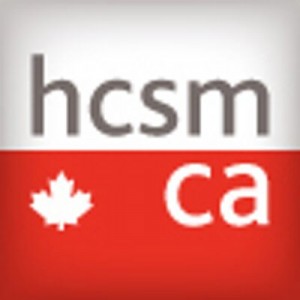
How do you map your public presence?
When we think about our life online we need to think about where we’re going to live. Where are we going to spend our time and energy? There are a lot of places to post and talk. But we can’t be everywhere. We need to consider it like a map.
When thinking about your map, think content and conversation: these are the two components of our social world. Content, like written copy and video, is the enduring stuff that people can search and find. Conversations are transient. Ideally, our conversations bring people back to our content. Social guru Chris Brogan has described this as a home base/outpost model.
A personal blog represents a great place to post original content. If you don’t want to commit to a personal blog, you can find someone willing to post your thinking (what I call in The Public Physician a ‘surrogate’ blog). Conversations, of course, happen in spaces like Twitter or Google+.
Discuss the opportunities and challenges of negotiating your digital footprint
Opportunities
The capacity to control. The biggest opportunity of negotiating my footprint is in having the ability to shape how the world understands me. My content and thinking truly define me. We can create our story or let someone do it for us.
Visibility. When people see me think, they want to connect with me. When we connect, things happen. I like things to happen.
Voice. The core elements of my footprint (blog and social platforms) have given me the opportunity to have my voice heard. I’m still amazed at the reach I can attain with such simple tools.
Individuality. Doctors have always been seen one way. The AMA or the CMA decided how we would look and sound. Now we are seeing the emergence of the individual physician voice. The tools of democratized media are allowing us a window into the hearts and minds of the physician. This is good.
Challenges
Boundaries. Since the early days of the public physician, boundaries have been a constant issue. Many of us don’t know what the rules are. And we’re only just learning. Knowing where personal ends and professional takes over represents an evergreen challenge. Increasingly, our boundaries are blurred.
Time. Learning to budget time, energy and bandwidth has been a key challenge to building a strong footprint.
Picking properties. Like time, knowing where to put attention is challenging for many docs starting out. This is why some loose mapping is important.
Finding purpose. Shiny object syndrome is our biggest enemy. Despite how cool these tools may be, we have to figure out what we want from our public presence. We need to ask why we’re here.
Developing a personal social rhythm. There’s a tendency to do exactly what others are doing. I’ve found that doctors go public for a variety of reasons and needs. We have to decide what we want personally and use the tools for that purpose. Experimentation is key, however. Most docs aren’t comfortable with experimentation.
How has online interaction shaped your thinking since 2008?
Actually, I’ve been blogging since 2006 (Parenting Solved – several hundred posts between 2006-2008).
My thinking has undergone a shift from seeing the world as limited to my immediate colleagues to finding my place a globally connected world. This globally connected world has allowed me to get ideas from designers, thinkers, educators, marketers and patients. All of these connections have reshaped how I see my immediate environment. In The Public Physician, I refer to this shift as the move from inward facing perspective to one that’s outward facing. This transition in perspective represents a substantial shift in the way physicians see themselves and their relationship to other professionals and patients. Changing our perspective changes how we see things. Hopefully it changes how we do things.
Beyond the ability to publish, the ability to have near real-time dialog in groups was revolutionary for me. My early days with Twitter were intoxicating. I saw so much potential. I never understood community until I began listening and talking in the groups naturally created by these new social tools. I might say that I didn’t even know how to listen to other people.
Most importantly, I never understood patients until I began listening to them. And not just listening to what they say to me, but their ambient commentary. Understanding their day-to-day issues has been eye opening. Vanderbuilt medical student Amol Utrankar recently suggested that this type of listening may represent a critical, new element in training doctors. We need creative minds to execute these kinds of ideas.
Thank you again for having me aboard. I hope all of you have the opportunity to grab a copy of The Public Physician. If not for you, for those doctors who would thrive in the public space.